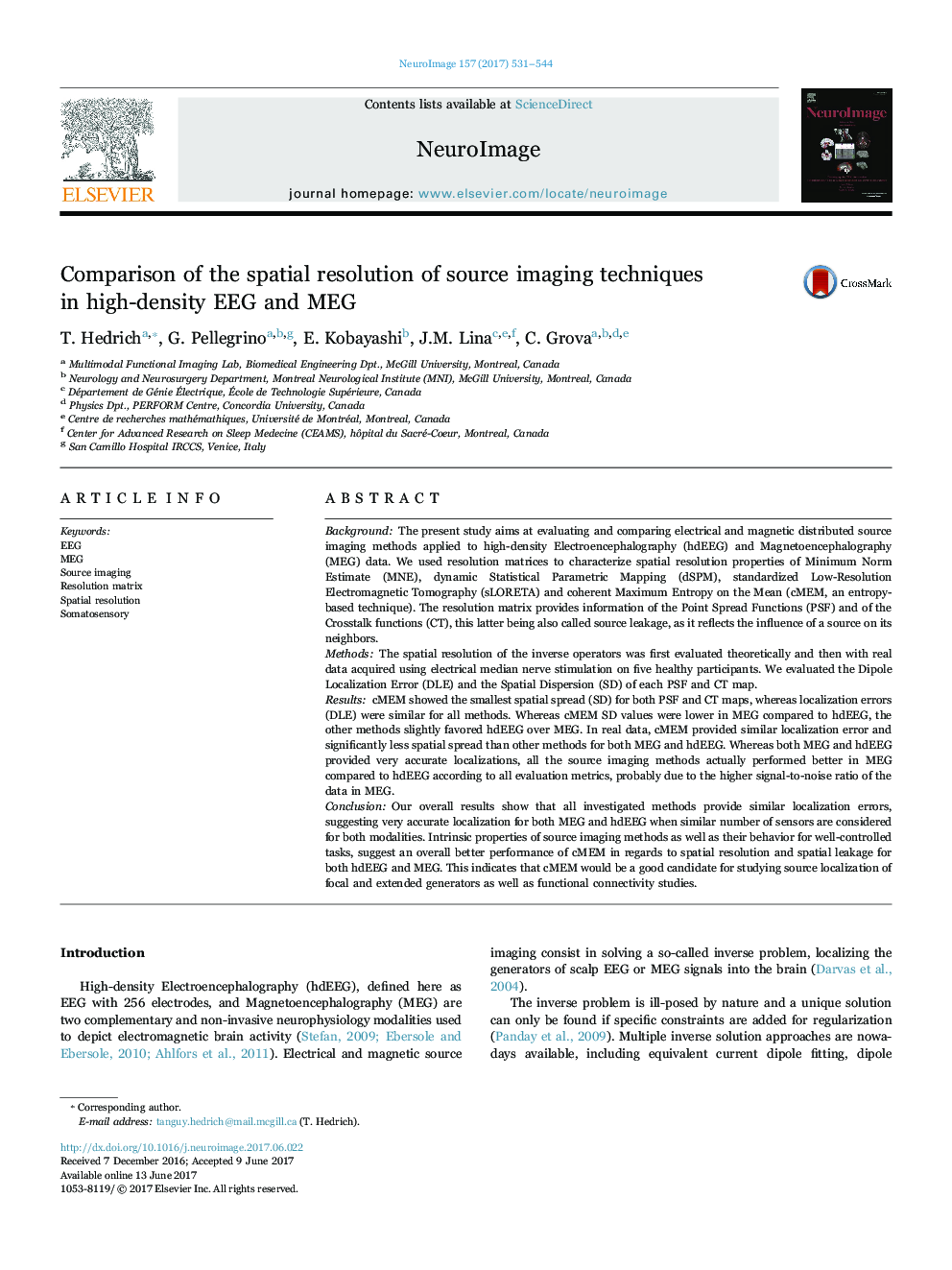| کد مقاله | کد نشریه | سال انتشار | مقاله انگلیسی | نسخه تمام متن |
|---|---|---|---|---|
| 5630937 | 1580853 | 2017 | 14 صفحه PDF | دانلود رایگان |

- Evaluation of intrinsic spatial resolution of EEG and MEG source imaging methods.
- Comparison of a novel entropy-based technique (cMEM) to well-established methods.
- cMEM showed similar localization error, lowest spatial spread and reduced crosstalk.
- MEG and high-density EEG (256 sensors) presented a similar level of spatial accuracy.
- Theoretical results confirmed with real data of somatosensory evoked potentials.
BackgroundThe present study aims at evaluating and comparing electrical and magnetic distributed source imaging methods applied to high-density Electroencephalography (hdEEG) and Magnetoencephalography (MEG) data. We used resolution matrices to characterize spatial resolution properties of Minimum Norm Estimate (MNE), dynamic Statistical Parametric Mapping (dSPM), standardized Low-Resolution Electromagnetic Tomography (sLORETA) and coherent Maximum Entropy on the Mean (cMEM, an entropy-based technique). The resolution matrix provides information of the Point Spread Functions (PSF) and of the Crosstalk functions (CT), this latter being also called source leakage, as it reflects the influence of a source on its neighbors.MethodsThe spatial resolution of the inverse operators was first evaluated theoretically and then with real data acquired using electrical median nerve stimulation on five healthy participants. We evaluated the Dipole Localization Error (DLE) and the Spatial Dispersion (SD) of each PSF and CT map.ResultscMEM showed the smallest spatial spread (SD) for both PSF and CT maps, whereas localization errors (DLE) were similar for all methods. Whereas cMEM SD values were lower in MEG compared to hdEEG, the other methods slightly favored hdEEG over MEG. In real data, cMEM provided similar localization error and significantly less spatial spread than other methods for both MEG and hdEEG. Whereas both MEG and hdEEG provided very accurate localizations, all the source imaging methods actually performed better in MEG compared to hdEEG according to all evaluation metrics, probably due to the higher signal-to-noise ratio of the data in MEG.ConclusionOur overall results show that all investigated methods provide similar localization errors, suggesting very accurate localization for both MEG and hdEEG when similar number of sensors are considered for both modalities. Intrinsic properties of source imaging methods as well as their behavior for well-controlled tasks, suggest an overall better performance of cMEM in regards to spatial resolution and spatial leakage for both hdEEG and MEG. This indicates that cMEM would be a good candidate for studying source localization of focal and extended generators as well as functional connectivity studies.
Journal: NeuroImage - Volume 157, 15 August 2017, Pages 531-544